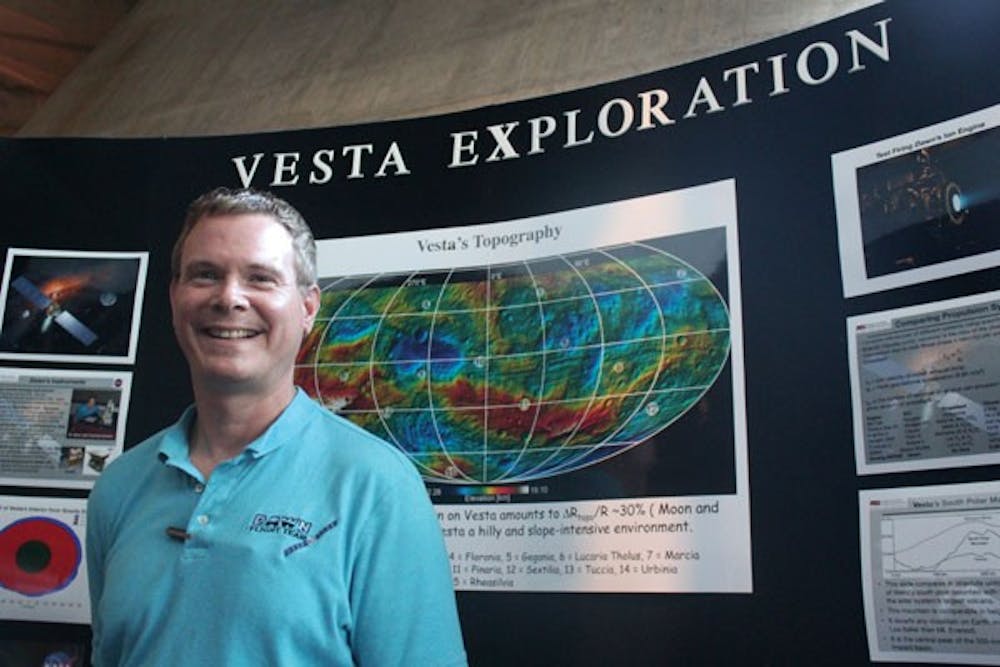 ASU Associate Research Professor David Williams presented his lecture, “Asteroids, Ion Propulsion, and NASA’s Dawn Mission to Vesta,” at the Arizona Science Center on Saturday and Sunday afternoon. (Photo by Marissa Krings)
ASU Associate Research Professor David Williams presented his lecture, “Asteroids, Ion Propulsion, and NASA’s Dawn Mission to Vesta,” at the Arizona Science Center on Saturday and Sunday afternoon. (Photo by Marissa Krings)The Arizona Science Center and an ASU professor brought visions of outer space to Phoenix on Saturday and Sunday.
The event, “Hasta La Vesta,” detailed NASA’s efforts to map out the surface of Vesta, a prominent asteroid in our solar system.
Volcanology professor David Williams’s lecture detailed the important events of the Dawn mission, which began in September 2007. “Asteroids, Ion Propulsion and NASA’s Dawn Mission to Vesta” discussed the mission’s use of solar-electric ion propulsion for more efficient space flight and the process of mapping out the Vesta asteroid while in orbit.
During its time in orbit, the spacecraft compiled a topographic map of the asteroid, measured its gravity field and mapped out its elemental composition.
Outside of the planetarium, Williams set up several displays featuring images of the Vesta asteroid. Viewers were able to see the 3D features of Vesta through special glasses.
Williams said the weekend’s events were critical to promote success in outer space.
“The public should know about the great discoveries that we are making throughout the solar system,” he said.
Williams was involved with the Dawn mission after NASA sent out an open call for proposals from scientists interested in joining the operation.
From the dozens of potential candidates, Williams was one of 23 individuals selected to assist in the operation.
With the Vesta phase of the Dawn mission complete, the spacecraft is in the process of traveling to the Ceres asteroid, which is the largest known asteroid in the solar system.
Detailed posters of the asteroid produced by the NASA Regional Planetary Image Facility on the Tempe campus were also displayed.
Included in that group of spectators was high school senior Daryl Anderson, who came specifically to listen to Williams’ lecture.
“Space exploration is a big deal, even if most people don’t realize it,” Anderson said. “At the rate that the planet is being overpopulated, we are going to need to find new habitats out there that can support human life.”
Duncan MacIntyre also attended the lecture and said the event benefits today’s youth.
“These kids need to realize that there is still so much yet to be discovered,” he said. “Hopefully, things like this will allow them to get an appreciation for all the mysteries still out there.”
Reach the reporter at mjgordo1@asu.edu




